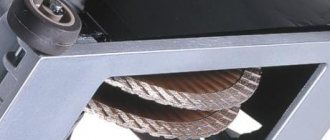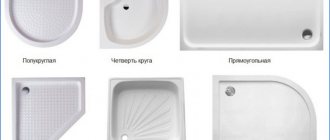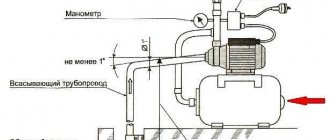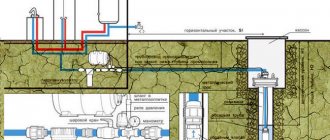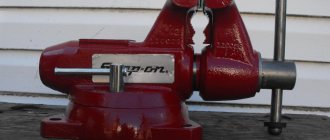Walk-behind tractors are very popular among farmers due to the fact that they perform a wide range of functions. They are used on the farm all year round: in the spring they prepare the land for planting, in the summer they mow the grass, and in the winter they remove snow. One of the main questions facing farmers is how to choose the right walk-behind tractor so as not to be disappointed later. This review aims to resolve the selection issues that arise.
Motoblock with disc clutch SCOUT 81-D
This is an inexpensive model with a diesel engine and manual start. The machine comes with a rotary cutter, which is connected to the power take-off shaft. The water-cooled diesel engine is started manually using an electric starter. The walk-behind tractor has a disc clutch with a friction clutch, which allows the walk-behind tractor to start smoothly.
The SCOUT 81-DE model is a version with an electric starter and battery. The machine is designed to operate at temperatures down to zero degrees. The equipment will cope with tasks where it is necessary to prepare the soil for sowing, harvest crops and mow weeds.
What is a mulcher and why is it needed?
The best gasoline walk-behind tractors with a power take-off shaft
Walk-behind tractors with gasoline engines are used primarily for cultivating small garden plots and summer cottages. They are characterized by small size, low price and light weight. The machines are equipped with a motor with a power of up to 10 horsepower. To choose the most suitable option, it is worth considering the rating of popular models.
PATRIOT Pobeda (440 10 7212)
A mini-tractor with a four-stroke gasoline engine is used for cultivating old arable soils. The model is distinguished by maneuverability and versatility.
Equipped with two forward and one reverse gears.
A convenient lever is provided to adjust the speed.
Can be used in conjunction with a cart, mower, snow blower and other equipment. The engine is protected from overheating by a cooling system .
The walk-behind tractor is made of a high-strength metal casing, which ensures a long service life.
Characteristics:
- processing width - 100 cm;
- engine capacity - 198 cubic meters. cm;
- engine power - 7 hp;
- fuel tank - 3.6 l;
- weight - 78 kg.
Advantages:
- durable body;
- large wheels;
- convenient speed adjustment;
- small size;
- acceptable price.
Flaws:
- a light weight;
- inconvenient steering wheel adjustment unit.
PATRIOT Nevada 9
The agricultural machine is suitable for cultivating large areas. Reliable and high-quality work is due to the presence of a powerful engine and a gear reducer.
The cutters are made in the shape of a saber, due to which they successfully cope with plowing virgin lands.
The model has excellent cross-country ability on any soil.
Characteristics:
- processing width -110 cm;
- plowing depth - 30 cm;
- engine power - 9 hp;
- fuel tank - 6 l;
- weight - 130 kg.
Advantages:
- power;
- quick start;
- economical fuel consumption;
- high speed;
Flaws:
- noisy work;
- high price.
CHAMPION BC1193
A universal device housed in a practical metal alloy housing. It features convenient operation and efficient operation in conjunction with additional equipment.
When moving up to 10 km/h, it covers a strip of 110 cm and plows the area to a depth of 30 cm.
At the same time, it produces minimal noise during operation.
Refueled with AI-92 gasoline. Thanks to the large fuel tank, refueling is not required during work.
Characteristics:
- processing width -110 cm;
- plowing depth - 30 cm;
- engine power - 9 hp;
- engine capacity - 270 cubic meters. cm;
- fuel tank - 6 l;
- dimensions - 180x80x110 cm;
- weight - 132 kg;
- noise - 78 dB.
Advantages:
- power;
- excellent transmission;
- reliable body;
- safe operation.
Flaws:
- difficult speed switching;
- high price.
PATRIOT Nevada
Reliable machine for fast processing of medium and large areas. Due to the grip of 100 cm per pass, it quickly copes with its task, requiring minimal action from the operator.
All he has to do is set the direction, and the walk-behind tractor passes perfectly even on old arable soil.
When working with a plow, you can improve the quality of processing and reduce the duration of work.
You can adjust the plowing depth from 20 to 30 cm.
Characteristics:
- processing width - 100 cm;
- plowing depth - 30 cm;
- engine power - 7 hp;
- weight - 89 kg.
Advantages:
- power;
- quick start;
- economical fuel consumption;
- high speed;
- compact size.
Flaws:
- shallow cultivation depth;
- multifunctionality.
Tselina NMB-901
A walk-behind tractor with a power take-off shaft from a reliable manufacturer of agricultural equipment. It is used in areas with large areas as independent equipment, together with a plow and other components.
It is characterized by high efficiency and fast processing due to the capture of up to 113 cm of soil in one pass.
By adjusting the plowing depth it is suitable for different types of land.
Characteristics:
- processing width -72-113 cm;
- plowing depth - 30 cm;
- engine power - 9 hp;
- engine capacity - 270 cubic meters. cm;
- fuel consumption - 374 g/kW*h;
- fuel tank - 3.6 l;
- dimensions - 136x780x100cm;
- weight - 123 kg;
- noise - 92 dB.
Advantages:
- power;
- optimal dimensions;
- large wheels;
- good build.
Flaws:
- no trailer hitch;
- high price.
Motoblock with disc clutch SCOUT 101-D
Model for agricultural work, with an engine power of 11 hp. The launch is carried out using a decompressor. The package includes a rototiller with a working width of 100 cm and an adapter seat for comfortable work. An extended gearbox (six forward and two reverse) allows you to select the required speed. The walk-behind tractor is equipped with a disc clutch with a dry friction type clutch, which is constantly engaged. If overload occurs, the clutch slips, preventing external parts from being damaged. The single-cylinder diesel engine is water-cooled.
The SCOUT 101DE model is available for purchase, which is equipped with an electric starter and battery. The machine is suitable for plowing and cultivating land, mowing grass, harvesting and transporting cargo in a trailer up to 800 kg.
Motoblock with disc clutch SCOUT 15DE
The model with the maximum configuration, which is equipped with an XT-15 diesel engine (as on the SCOUT T-15 mini tractor) with a power of 15 hp, electric start, a rototiller and an adapter seat. The machine is suitable for year-round operation. Water-cooled four-stroke diesel engine with powerful battery and electric starter. The walk-behind tractor has traction power, which allows it to work with a trailer weighing up to 1000 kg. The package includes an active rototiller with a working width of 100 cm. The adapter seat allows you to work like on a mini tractor, that is, without leaving your workplace. The walk-behind tractor is equipped with a disc clutch with a dry friction type clutch, which is constantly engaged. If overload occurs, the clutch slips, preventing external parts from being damaged. In addition, the device is equipped with a gear reducer.
The most powerful machine from the SCOUT line, it can cope with work at any time of the year. In terms of power and functionality, the equipment is comparable to a mini tractor. The machine will harvest crops, dig up vegetables, mow down harmful plants and plow virgin soil using a plow.
How to choose a walk-behind tractor
5 / 5 ( 2 voices)
Using a walk-behind tractor.
The walk-behind tractor is a universal agricultural machine, using a variety of trailed and mounted devices. The versatility of use implies a huge number of tasks that it can perform, namely:
- Plowing, loosening the soil and any other operation related to the cultivation of the top layer of soil, even the most stale or virgin soil.
- Hilling, cutting furrows with a plow, planting and digging up potatoes.
- Uniform mixing of soil with applied fertilizer, crushing weeds.
- Carriage of goods and general movement using towed devices (carts or various adapters).
- Clearing the area of snow using a rotary auger attachment or a blade.
- Haymaking, lawn and garden maintenance.
As you understand, a walk-behind tractor is not just another machine on the farm, but a full-fledged means of small-scale mechanization of many operations. In this regard, the target audience for purchase is very broad, from a simple summer resident to a professional farmer.
The difference between a walk-behind tractor and a cultivator.
A motor cultivator and a walk-behind tractor are often confused, and most likely this comes from the similarity of their main function - cultivating the land. Let's understand the difference.
The cultivator does not have such a wide range of work and endurance as a walk-behind tractor, but it has other advantages. Firstly, it is lighter and more compact, which is more convenient for small processing areas with an abundance of additional plantings. Secondly, the design of the cultivator is simpler and therefore it is easier to handle, service and repair even for an inexperienced user. And thirdly, it is an order of magnitude cheaper than a walk-behind tractor.
In all other respects, the walk-behind tractor will be better than its “younger brother”. We have already noted above a long list of its capabilities; versatility of application is the main advantage. Another factor is the processing area, which is too large (over 1 hectare) for only a walk-behind tractor.
Division of walk-behind tractors into classes.
Depending on the weight and intended use of the walk-behind tractor, we can distinguish 3 classes:
I. Lungs.
Mainly designed for simple cultivation of land on an area of up to 40 acres. Of course, they are capable of working with mounted and trailed equipment, but due to their low weight and power this is not a very suitable option, especially for cultivating heavy soil. They are more useful for summer residents and owners of small plots.
| Light class | |||
| weight | power | land area | working width |
| up to 80 kg | 5-7 hp | 10-40 acres | up to 85 cm |
II. Medium walk-behind tractors.
Heavier and more powerful than the light class, which makes it possible to fully use it with any attachments. Middle-class walk-behind tractors can easily plow even virgin soil, clear the area of snow and cope with haymaking. The ability to cultivate an area of up to 1 hectare makes the middle class very popular among active users of rural areas.
| Middle class | |||
| weight | power | land area | working width |
| 80-120 kg | 6.5-9 hp | 40 acres - 1 hectare | up to 100 cm |
III. Heavy walk-behind tractors.
The most powerful and heaviest units, for the heaviest and longest work over a wide area. This is practically a tractor (especially with the use of a front adapter) capable of performing any agricultural task: raising virgin soil, hilling, snow removal and transporting heavy loads. Suitable for professional use by public utilities and farms.
| Heavy class | |||
| weight | power | land area | working width |
| 120-180 kg | 9-17 hp | 1-4 ha | up to 135 cm |
When choosing a class, each one relies on different indicators. Some start from the area of their garden, while others need a certain working width. Essentially, any approach is correct, but ideally it is better to correlate all factors, including the quality of the land and even the physical abilities of the user.
Choosing an engine for a walk-behind tractor.
The engine is the most important component of a walk-behind tractor, determining its potential. Engine power is measured in horsepower (hp) or watts (W). Modern walk-behind tractors are equipped with four-stroke engines with power ranging from 5 to 17 hp. Each class is characterized by one or another engine; for light walk-behind tractors, a small power is enough, and for heavy ones, vice versa.
Power is not the only criterion for choosing an engine. Pay attention to the difference in the type of fuel used - gasoline or diesel. At first glance, it may seem that the difference is not fundamental, but judging by the experience and user reviews, it is very significant.
The gasoline engine is widely used and has a simple design, which makes it cheaper in cost and maintenance. It is quite reliable and productive, but not as good as its diesel counterpart. Another advantage is the wide variety of manufacturers, power and reliability of gasoline units. Installed on most light and medium class models. analogue. Another advantage is the wide variety of manufacturers, power and reliability of gasoline units. Installed on most light and medium class models.
The diesel engine has more torque at low speeds, which makes it more torquey. Engine life, high reliability and fuel efficiency are undoubted advantages, but there are also disadvantages. Firstly, the high cost of both the engine itself and its components. Secondly, complex maintenance and repairs. Diesel units are very heavy and are usually installed on heavy and medium-sized walk-behind tractors.
Gasoline engines are more popular and are ideal for processing small and medium-sized areas. Diesel engines, although more expensive, are more suitable for processing the largest area.
starting system is the so-called “important detail”. While low-power models can be easily started with a manual starter, heavy, powerful units with high compression and output are often equipped with an additional battery and an electric starter. A powerful engine can be difficult to start, and electric starting will be a convenient addition to save time and effort. Plus, the presence of a battery makes it possible to connect a headlight.
Transmission: gearbox, clutch and gears.
Ease of operation, reliability and layout are determined by the transmission, which consists of the type of gearbox, clutch, number and method of gear shifting.
The gearbox is responsible for transmitting torque from the engine to the output shaft, where the cutters or cultivator wheels are attached. Heavy walk-behind tractors can have two shafts, one for wheels, the other for cutters. In this case, the speed decreases, i.e. If the engine produces one number of revolutions, then the output will be several times less. The gearbox housing is completely filled with transmission lubricant, which requires periodic regulated replacement.
Gearbox types:
- The gear housing houses chains and sprockets. This design is simpler and cheaper than others and is used more often on lightweight models.
- The most reliable options for gearboxes are gear and gear-chain. They are structurally more complex, more reliable and heavier.
- The worm gearbox on walk-behind tractors is practically not used, as it cannot withstand high loads and heats up quickly.
Pay attention to the material from which the gearbox is made.
Cast iron is the best option, aluminum is not as reliable, but will be cheaper. If the gearbox is dismountable, then it is possible to repair it. For example, frequent breakdowns include a broken chain, wear of a sprocket or gear, the replacement of which is not a difficult task. A non-removable gearbox cannot be repaired and if it fails, it is replaced as a complete unit, which will cost a pretty penny. The clutch serves to transmit torque. There are two types of clutch installed on walk-behind tractors:
- Release clutch, multi-disc or single-disc. Used on heavy models that require reliability. The principle of operation is the same as on a regular car.
- Belting. The belt on the pulleys transmits force due to the connected tension roller. The most common clutch technology, simple and reliable.
Reverse and several forward gears are a must for any walk-behind tractor. Versatility of use requires different speeds and directions of movement. Low forward speed is used for cultivation and when connecting attachments, high forward and reverse gears are needed for moving with a cart or adapter. Reverse speed is necessary if the unit digs into the ground. The cultivator can be pulled out manually, but with a heavy walk-behind tractor this will not work. Let's consider several options for switching speeds:
- Transmission. The most convenient option, gear shifting inside the box is combined with a disc clutch. Typical design for powerful models.
- Belt and gear shifting. It implies direct access of the lever to the gearbox, the gear is selected by one or another location of the working chain. Belt drives are the simplest design, where the speed is selected by tensioning the desired roller on the belt system.
The shaft power take-off (PTO) is a kind of disc clutch with a gearbox, in other words, a reinforced transmission. This is a unit that transmits rotation to attachments via a primary or intermediate shaft in the gearbox. The main advantage of the PTO is high torque and ease of connecting active adapters and attachments. This design is similar to a tractor, very reliable and efficient.
Design features of the walk-behind tractor.
handle is an important part of ergonomics and ease of working with a walk-behind tractor. It would not be amiss for it to be adjusted both in inclination and height (according to the user’s height) and in the left-right direction, so that during work the user walks slightly to the side of the direction of movement and does not trample the arable land.
The cultivation process is accompanied by constant shaking; high-quality rubber steering wheel pads will partially protect the operator’s hands from harmful vibration.
The walk-behind tractor frame is the basis for fixing the engine, transmission and other components. The stronger it is, the better. At the back of the frame there is always a hitch where an adjustable coulter is placed, which serves as a limiter for the depth of penetration of the cutters into the soil or attachments. At the front of the frame there is also a place for attaching front attachments or an additional transport wheel.
, protective wings may seem like an insignificant design element, but they are not. Firstly, they prevent loosened soil from being scattered around during cultivation. Secondly, they protect the user during any operation with the walk-behind tractor. The manufacturer can supply walk-behind tractors with wide cutters with additional protective wings.
Equipment and attachments.
In addition to wheels, the standard equipment always includes cutters for cultivation. It happens that you need to purchase them separately as an additional option, but this is rather an exception. Pay attention to the shape of the cutters, the thickness of the metal wall they are made of. Some manufacturers take a careful approach to this issue and create cutters that sharpen themselves, penetrate the soil better, or minimize the sticking of soil during cultivation.
We already talked at the beginning of the article about the versatility of the walk-behind tractor. Each of the many operations on it requires a specific attachment. They are attached to the unit via the rear hitch or front adapter. The mounting principle may differ depending on the model. When purchasing a new device, carefully study the instructions and assembly sheet, where the manufacturer indicates the individual qualities of its products and the required equipment.
Of course, this is the general picture; the variety of mounted and trailed equipment is much wider. You can find a more detailed description and scope of application of each attachment in a separate article on our website dedicated specifically to this.
Manufacturers.
There is no division of walk-behind tractors into professional and household ones as such. Of course, in professional activities the medium or heavy class will most likely be used, but in these categories there are many machines that are not designed for constant use in harsh conditions.
The “bags” can be roughly divided by area of application based on the build quality and reliability of the design.
- There are reputable manufacturers with extensive experience who make very reliable products, but this will be an order of magnitude more expensive than everything else. Viking, MTD, Honda, Caiman, Husqvarna, TEXAS are some of the best foreign companies; domestic and Red October equipment also performs well.
- Today there are a huge number of more affordable models, mostly made in China. You shouldn’t think that this is entirely bad and unreliable technology, this is not the case, there are many decent and high-quality devices here. Of these, walk-behind tractors from Champion, LIFAN, RedVERG, Elitech, and Carver can be noted.
The walk-behind tractor belongs to the complex technical category of goods; when buying a new device, you will undoubtedly need to obtain a warranty from the manufacturer. They can range from one year to five years. You should not buy a unit just anywhere; ideally, choose a specialized store with a service center where you will be provided with full consultation and will be sure to check the serviceability of the product upon sale.
Service and maintenance of walk-behind tractor.
Pay special attention to the availability of additional equipment and consumables for the model you choose. It often happens that when selling equipment, the seller does not pay due attention to this and finding a basic air filter or extensions for wheels becomes a huge problem.
The walk-behind tractor is purchased for a period significantly exceeding the warranty period, and its maintainability and spare parts base are very important. Study the manufacturer's responsibility, user reviews and online ratings of this or that equipment. Most often, Chinese companies mess up here, because their model range and internal structure of the mechanism often change. The services also note not only the difficulty of repairing diesel engines, but also the extremely unsatisfactory distribution of spare parts for them.
Conclusion.
When choosing a walk-behind tractor, you will have to take into account many of the points given in this article, but we will highlight two key ones.
- Firstly, this is the area of land requiring cultivation.
- Secondly, the functionality that you want to get - that is, you will have to frequently transport cargo on a cart or carry out haymaking every year.
Consider the reserve of power and reliability, but without fanaticism. You should not buy a heavy walk-behind tractor if you need to plow a small area, it will be inconvenient and the money spent will not be worth it. Ergonomic additions and improved quality will add to the price, and here it’s up to everyone what to choose – convenience and reliability or low cost
In the end, you can take a closer look at a company that, for example, your neighbor will recommend based on his own experience. Word of mouth is indeed a good form of advertising. Have a good job!
4.5 2 votes
Article rating
SCOUT 15-DE is aggregated with the following equipment:
- Single-body plow
- Potato planter
- Potato digger
- Rotary mower
- Cross rake
Before purchasing a heavy walk-behind tractor with a disc clutch, pay attention to the tasks that will be assigned to the machine. The more powerful the machine, the easier it is to do the job. If you have to work with virgin soil, then the SCOUT 15DE walk-behind tractor with a disc clutch is the best to cope with this task. If you need to cultivate a personal plot with a vegetable garden, then a walk-behind tractor with a disc clutch SCOUT 101-D will cultivate the soil and help plant vegetables.
The equipment mentioned in the article can be purchased at the Gardenshop tractor showroom. The goods are delivered throughout the Russian Federation or by pick-up from the salon’s branches in St. Petersburg, Tula and Moscow.


